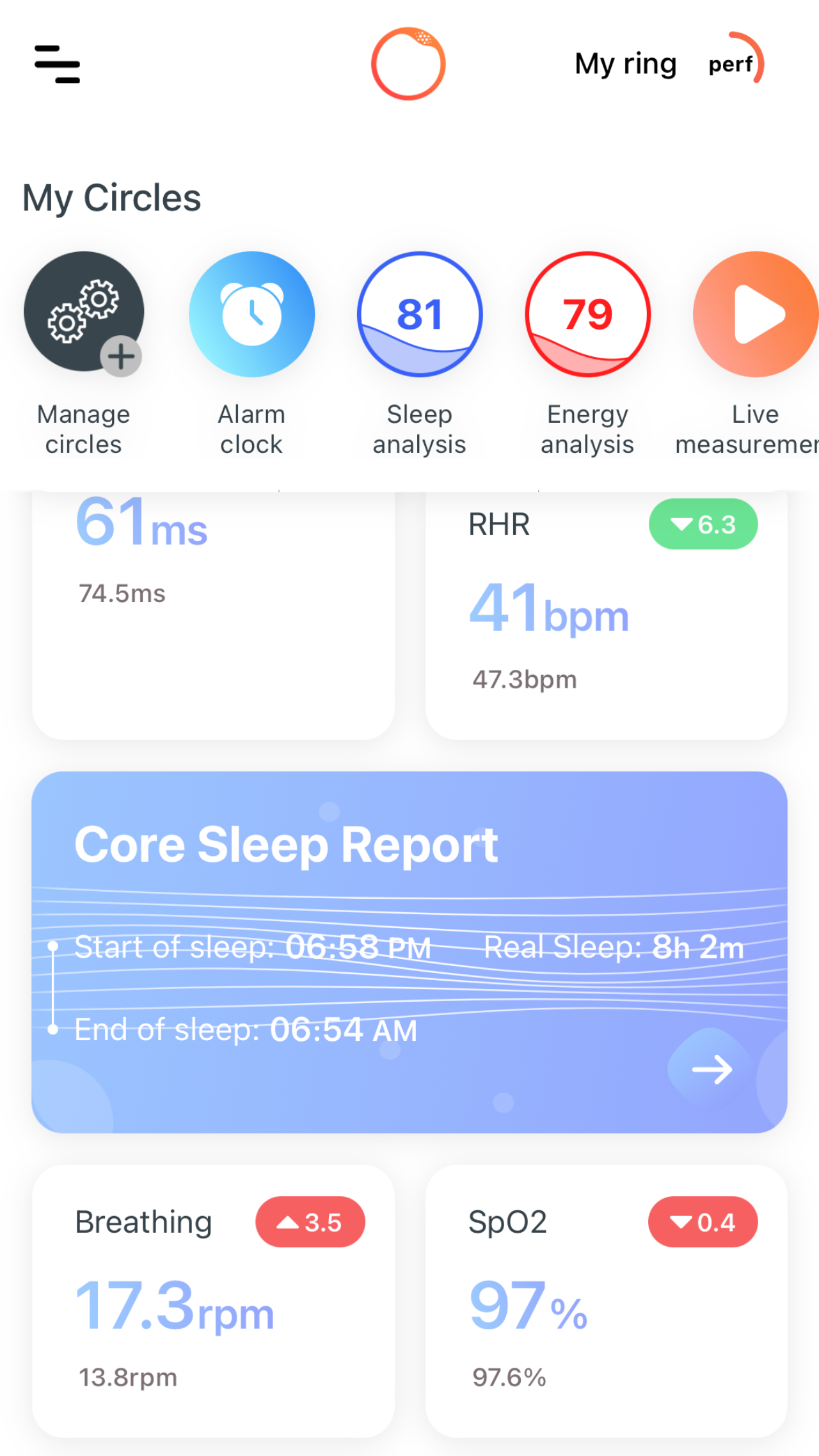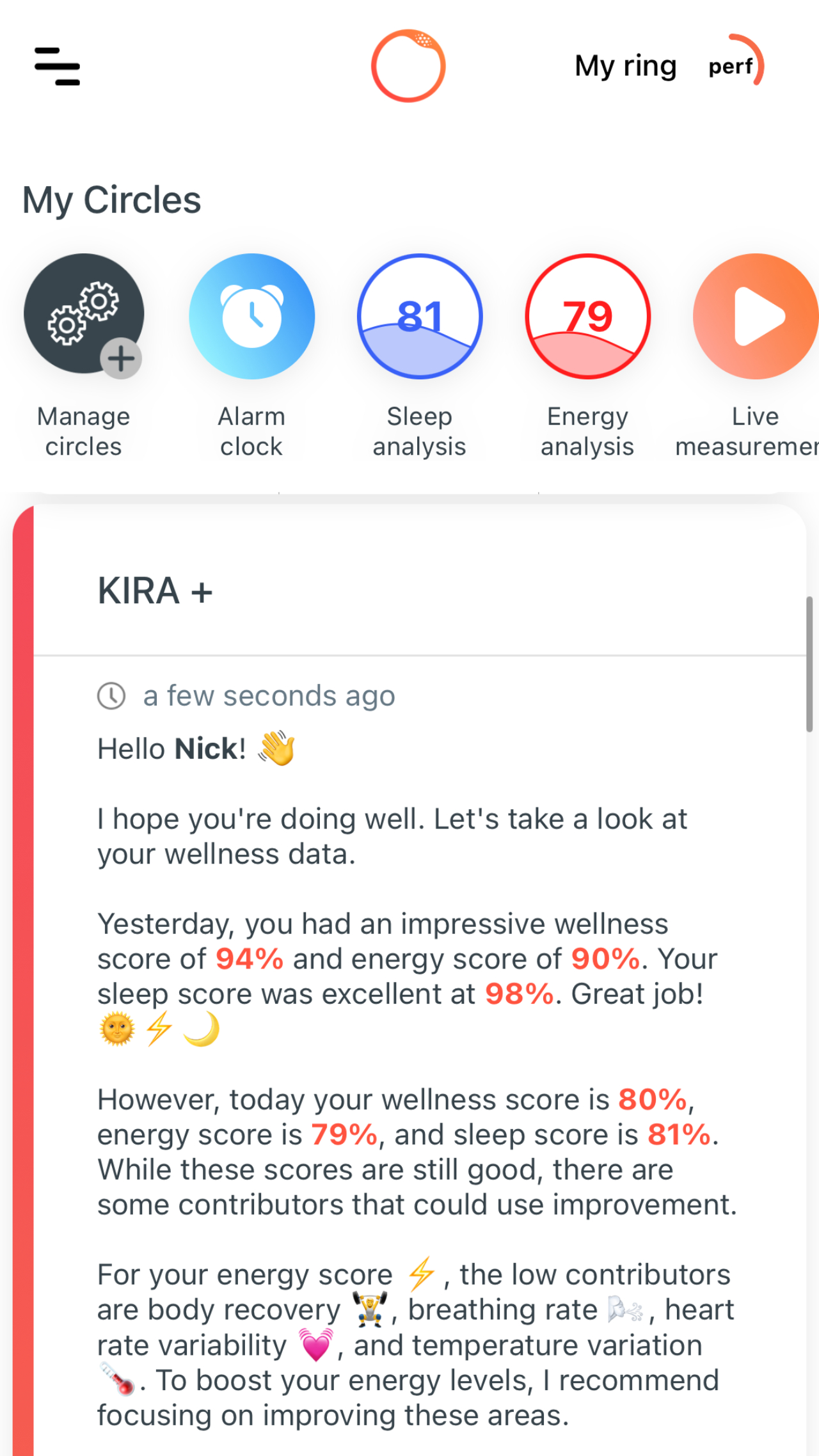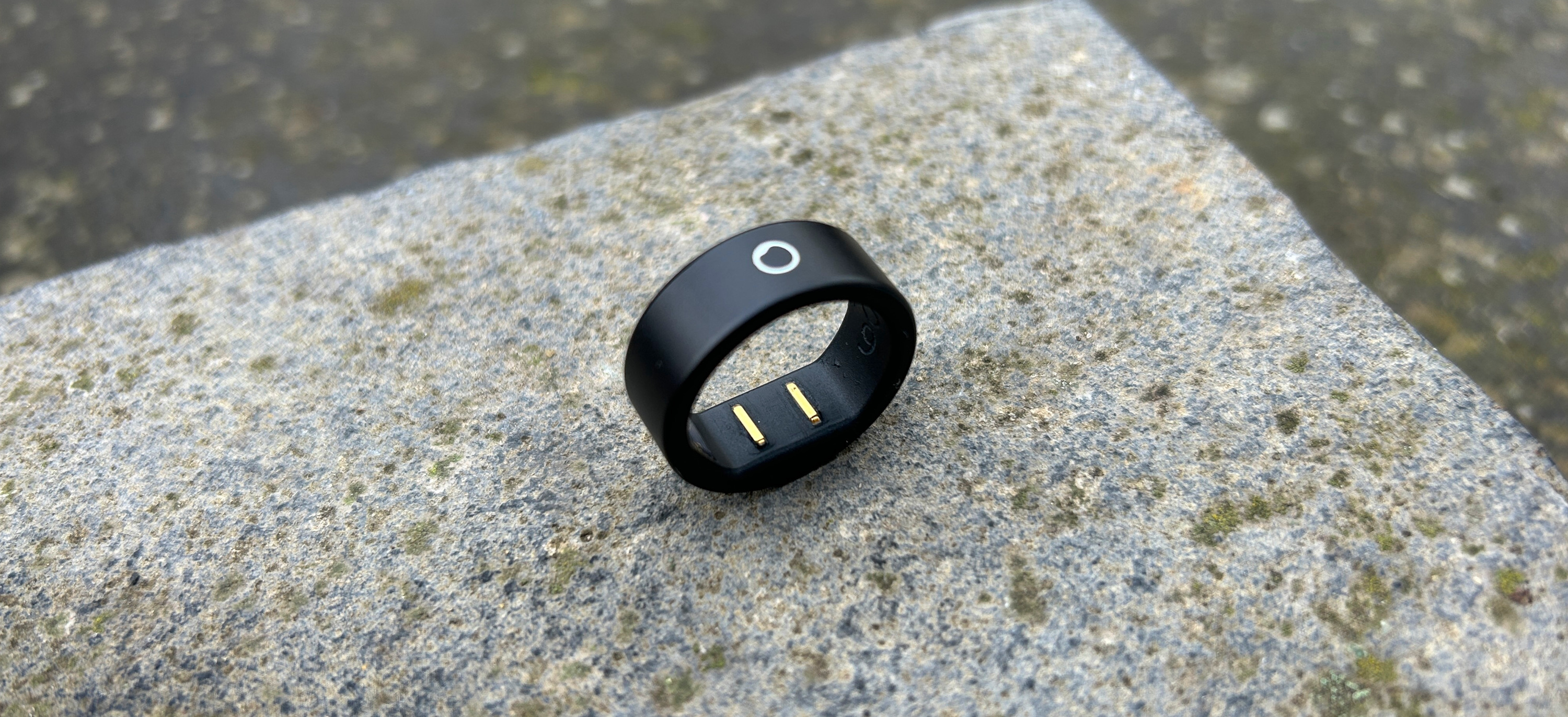Our Verdict
The Circular Smart Ring Slim provides a wealth of information about your body, but its tracking isn’t reliable enough. Although it’s lightweight and slim, I didn’t find the design attractive, or durable, and the battery life is short in performance mode.
For
- Slim and light
- Tracks a lot of metrics
- Smart alarm feature
Against
- Some data inaccurate
- Easily scratched
- App is cluttered and buggy
- Short battery life
You can trust Coach
Smart rings can be more comfortable and unobtrusive to wear than the best fitness trackers, and when I tested the Oura Ring I was impressed by the higher level of accuracy it offered for sleep tracking when compared to sports watches.
I hoped that the Circular Smart Ring Slim might be similarly effective and become a rival to the Oura but, after a month of testing, the Circular Slim has failed to wow me, with the design and the accuracy of its tracking falling short.
Circular Smart Ring Slim: Price And Availability
The Circular Ring Slim launched in November 2023 and costs £225 in the UK and €259 in Europe. This is cheaper than the Circular Pro 1 (€364), which is larger and comes in one of four finishes versus the Slim’s one. The ring ships worldwide, so can be purchased in the US.
The Oura Ring 3 costs $299/£229, though you need to have a subscription to unlock many of its best features, which you don’t with the Circular rings.
At the time of writing the Circular Ring Slim was out of stock, but it’s possible to sign up for notifications as to when it’s next available.
How I Tested This Smart Ring

I’ve worn the Circular Ring Slim day and night for a month, only taking it off to charge it—though this was quite often. During testing I also wore the Oura Ring 3 to compare the readings, as well as the Garmin Epix Pro and Apple Watch Ultra 2. Aside from the past two versions of the Oura Ring, this is the only smart ring I’ve tested.
Design
The Slim in the ring’s name is justified. Where the Oura Ring is 2.55mm thick, the Slim is just 2.2mm; it’s also light, at 2g, and comfortable to wear day and night. It is 8.8mm wide and has a small white logo on the top that shows which way up it’s meant to be worn. To me, this isn’t an appealing or subtle design feature, though the bigger design issue is the materials used. The Circular Slim is made from a mix of aluminum and carbon fiber, rather than a hardier material, like titanium, and the result is that it scratches easily and has a plastic feel when compared with the titanium Oura Ring.
Sign up for workout ideas, training advice, reviews of the latest gear and more.
The ring became scuffed within days of starting to wear it, with silver scratches showing through the black exterior and reducing the appeal of its design further. The ring isn’t waterproof, just water-resistant enough to withstand splashing when washing your hands or showering. For now, it’s also only available in one color: matte black.

As with other smart rings, you are sent a sizing kit when you order to ensure you get the right fit. The ring needs to be tight so the sensors take an accurate reading and it’s wise to wear the sizing kit rings 24/7 to see how they feel when your fingers swell. The Slim is packed with sensors to track your sleep and daily activity. It has infrared, red and green LED sensors, a surface temperature sensor and a three-axis accelerometer. There’s a haptic button where the logo shows on the top of the ring that you can use to turn off features like the vibrating alarm powered by the motor in the ring.
In the box is a charger that plugs into a USB-C port on which the ring sits. The charger is neat and has a keyring on it, but the way the ring has to sit on it means it’s hard to use the charger when plugging it into a computer on a desk.
Sleep And Activity Tracking
The Circular Slim tracks a lot of data about you. On-board sensors monitoring heart rate, heart rate variability (HRV), sleep stages, blood oxygen saturation, stress levels and a lot more. There’s a 14-day calibration period to set your baselines, so it’s only after two weeks that you start getting useful insights into the state of your body.
The headline stats are delivered in the app through “Circles”, which give sleep score, energy score (similar to the readiness score you get on other devices) and stress levels. You can also take a live measurement with the ring to show your heart rate, HRV and blood oxygen saturation.
You can then click on the Circles for detailed information about sleep and energy levels. As with other smart rings, I found sleep analysis the most interesting aspect of the tracking, with information on how long it took me to go to sleep, my overall sleep debt, and how restless I was overnight, along more common features like sleep stages. The Slim also tracks HRV and temperature and plots them against your baseline.

During the day the ring tracks steps, calories burned and heart rate, awarding “cardio points” for when you’re active as well as monitoring stress levels. I found the step tracking generally showed totals lower than the watches I wore that day, but not by much. The ring can’t track workouts, nor can it pull workout data from Apple Health or Google Fit to fill in this data in the app, unlike the Oura Ring.
Unfortunately, the accuracy problems I saw with the ring’s overnight tracking were extensive. My temperature fluctuated a bizarre amount throughout testing, including one night where it was shown as 7.3°C (approximately 12°F) below normal, while other trackers and the Oura ring showed normal readings.
I’ve barely had a minute of deep sleep throughout the month, according to the ring, again when other trackers have observed I usually get 40-50 minutes a night. My sleep scores have sometimes failed to tally up with reality too: I was getting 90+ scores for a week despite being regularly woken by a baby and staying up late and drinking alcohol one night. My resting heart rate data is also higher than with other devices, and some nights I get no sleep data at all from the Slim, or no sleep stages.

Some data has been accurate, or at least in line with other devices, such as the times I fell asleep and woke up, though the Circular Slim missed times I woke in the night occasionally, and the HRV measurements have been similar to those of the Oura Ring and Garmin watch.
The App
The Circular app is busy-looking, which isn’t surprising given the amount of data the ring collects, but it’s a bit cluttered and once you look beyond the Circles at the top of the app the data is overwhelming. The Oura app is cleaner and more enjoyable to use, though at least the Circular app doesn’t require a subscription to use it.
It takes time to sync the ring with the app though, and sometimes I couldn’t find the time to wait for the data to show up in the morning. The ring stores 20 days of data so you can do a catch-up sync at another point, but this slow sync is again worse than the experience with the Oura Ring, which flashes up sleep and readiness scores shortly after you open the app in the morning.

There were also bugs with the Circular app, such as frequent notifications that I was offline (when I wasn’t), and that I couldn’t rename the ring (after it told me I could rename the ring when I first set it up).
One novel feature with the Circular Slim is the AI assistant Kira+, which offers daily recommendations based on the data tracked by the ring. Unfortunately, this wasn’t as smart as I’d initially hoped. Kira+’s suggestions were a long stream of text telling me, once more, the data the ring has tracked, plus basic advice like doing breathing exercises and keeping your bedroom cool and comfortable at night.
You can set an alarm clock in the app, including a smart alarm feature that wakes you in a window of time based on your sleep patterns. The ring vibrates to do this, and you turn off the vibration by tapping the logo. It’s an unobtrusive way to wake up when others are in bed with you.
Battery Life
The Slim is listed as lasting up to five days on a charge, but this is in Eco mode, which reduces how often it takes heart rate readings and doesn’t track your sleep stages. In Performance mode the ring lasted two days (at most), which is less than the four days I typically get from the Oura ring.
Is The Circular Smart Ring Slim Worth It?
I’d steer clear of the Circular Slim. To me, the design isn’t particularly nice and it scratches easily, and I’ve reservations about the accuracy of its tracking. The battery life is short and the Oura Ring is simply a better all-round product. I’ve not yet tested other rings like the Ultrahuman Ring or RingConn Smart Ring, which may be better alternatives to Oura than the Circular Slim.

Nick Harris-Fry is a journalist who has been covering health and fitness since 2015. Nick is an avid runner, covering 70-110km a week, which gives him ample opportunity to test a wide range of running shoes and running gear. He is also the chief tester for fitness trackers and running watches, treadmills and exercise bikes, and workout headphones.

